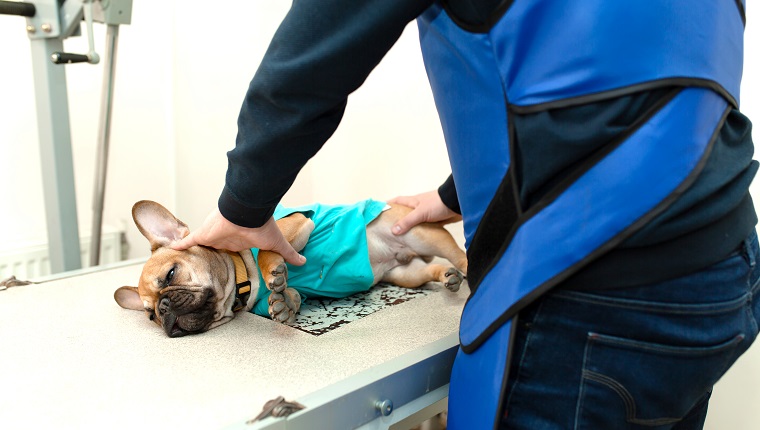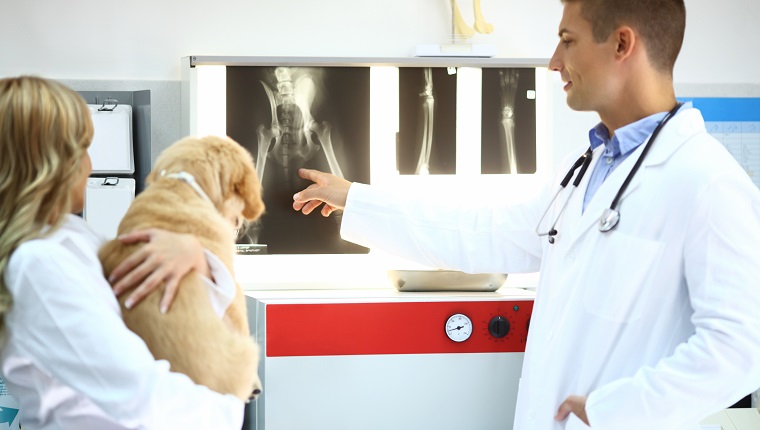Osteochondrodysplasia in dogs is a medical condition that involves a dog’s bones and cartilage failing to grow and develop properly. In turn, dogs who develop the condition end up with shortened limbs, which is often referred to as dwarfism.
This is a genetic condition, and a number of breeds have a higher likelihood of developing it. These include Labrador Retrievers, Norwegian Elkhounds, and Scottish Deerhounds,
If you see signs that your dog might have bone and cartilage development issues, then you must consult your veterinarian for a proper diagnosis and course of treatment. Here’s what you should know about the symptoms, causes, and treatments of osteochondrodysplasia in dogs.
Symptoms Of Osteochondrodysplasia In Dogs
Osteochondrodysplasia in dogs can present a range of symptoms. Some of the most common symptoms include:
- Shorter than normal bones
- Failing to grow properly
- Abnormally large head
- Underbite
- Curved spine
- Bowed legs
Causes Of Osteochondrodysplasia In Dogs

The cause of osteochondrodysplasia in dogs is genetic. It can affect dogs of any sex equally. However, some of the breeds of dog that most frequently develop the condition include:
- Boston Terriers
- Cocker Spaniels
- Labrador Retrievers
- Basset Hounds
- Scottish Deerhounds
- German Shepherds
- Pugs
- Norwegian Elkhounds
- English Bulldogs
- Scottish Terriers
Veterinary Treatments
If you suspect that your dog is developing osteochondrodysplasia, then your veterinarian will want to ask a series of questions about their medical history. They’ll order blood and urine tests. Vets also normally use X-rays to confirm a diagnosis. The vet will pay especially close attention to the spine.
Treatment can often involve surgery; though the precise form of surgery will depend on the symptoms that your dog is suffering from. Additionally, vets often suggest medication including pain killers and anti-inflammatory pills.
As ever, if your vet prescribes your dog any medicine, it is vital that you stick to the precise dosage and frequency instructions. Your dog must also complete the full course of medication as your vet advises.
However in many cases, dogs who develop this condition can go on and lead normal, unhindered lives; although, it is important to monitor any potential symptoms that may develop and bring them up with your vet.
Has your dog developed osteochondrodysplasia? Do they still live a mostly normal, healthy life? Then tell us all about it in the comments below.









